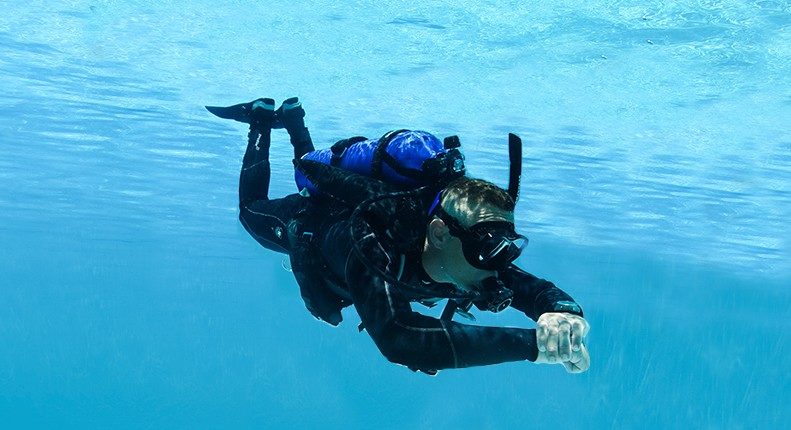Advanced Buoyancy Control
Introducing a diver to the benefits of controlling his buoyancy usually has a great positive effect, an effect that will enhance the diver’s sense of enjoyment and feeling of accomplishment. This specialty is designed to increase the open water diver’s understanding of the factors that influence buoyancy, and to train the diver how to use the means available to him as methods for controlling his buoyancy. The added benefits to the marine and freshwater environments, cannot be overstated; as well as a diver that has better control of himself in conjunction with his environment.

What you can expect to learn
The SDI Advanced Buoyancy Diver course takes an in-depth look at all of the following and more:
- Why do we care about buoyancy?
- Don’t touch the aquatic life, save the environment
- Less fatigue, less effort required, more fun
- Reduced air consumption = more bottom time
- Able to control buoyancy = better pictures or video
- When must a buoyancy check be performed?
- When equipment is changed
- When diving environment is changed
- Have not been diving for a while
- During every dive
- Buoyancy factors
- Additional equipment; photo, video, extra cylinder, extra equipment, dive lights, etc
- Cylinder weight changes during a dive as air is consumed from the cylinder, dependent on cylinder size
- Using lungs vs. BCD.
- Using BCD vs. dry suit
- Staying physically fit
- Breathing patterns and technique
- Compression of suit due to water pressure
- Weights – position and distribution and what impact that may have
- Streamlining equipment
- Streamlining body (body positions)
- Efficient kicking style
- Practicing your skills
- Weighting
- Swimsuit
- 3mm and 5mm wet suit
- Cold-water suit with hood
- Dry suit
- How to perform a standard buoyancy check; with an almost empty cylinder
Some of the required skills you will have to demonstrate include:
- Assembling of dive equipment
- Pre-dive check
- Perform a pre-dive buoyancy check with almost empty cylinder
- Adjust weight to achieve correct buoyancy
- Change cylinder and use a full cylinder
- Do a pre-dive buoyancy check with full cylinder
- Controlled descent
- Hovering exercises
- Fine-tune with breath control
- Fine-tune with BCD or dry suit
- Close to bottom exercises, no touch
- Swimming exercises
- Ascent that includes a safety stop hovering; simulate safety stop if in pool
- Log dive, noting the amount of weight used
- Change to a full cylinder
- Do a pre-dive buoyancy check with the full cylinder
- Controlled descent
- Hovering exercises
- Fine-tune with breath control
- Fine-tune with BCD or dry suit
- Close to bottom exercises, no touch
- Ascent that includes a safety stop hovering; simulate safety stop if in pool
- Log dive, noting the amount of weight used
Course Equipment Requirements
- Basic Scuba Equipment
Course Prerequisites
- SDI Open Water Scuba Diver, SDI Junior Open Water Diver, or equivalent
- Minimum age 18, 10 with parental consent
Want to know more?
Ask more questions or schedule any of these courses Email Us.
